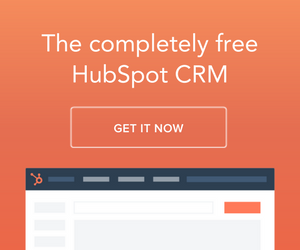 Prospective customers can’t buy from you when they don’t even know you exist. Increasing brand awareness expands your reach, makes marketing campaigns more effective, and helps you grow your small business.
Prospective customers can’t buy from you when they don’t even know you exist. Increasing brand awareness expands your reach, makes marketing campaigns more effective, and helps you grow your small business.
What’s the best way to increase brand awareness for a small business? Here are 10 smart strategies and tactics.
- Intuitive brand and clear message. From your logo, to your content, prospective customers need to be able to quickly understand what you do and associate your brand with your products and services. If people are confused and/or don’t understand what you do, look for ways to refine the way you’re packaging your business such as adding the right tagline that complements your logo and name.
- Consistent promotion. People won’t know your small business exists unless you put yourself out there. Find ways to consistently get your brand and your business in front of prospective customers so you are top of mind when they’re ready to make a purchasing decision. Even when things get super busy, you can’t go dark for weeks or months on end. Every little bit counts.
- Earned and paid media. With the continued popularity of social media and decline of traditional news outlets, small business owners often overlook earned and paid media—two avenues that can be highly effective at increasing brand awareness. Don’t just limit you’re your scope to newspapers—pitch your small business to relevant blogs, industry publications, and influencers that will help you reach your target audience.
- Programs and events. For many small businesses, there’s still no substitute for those face-to-face interactions that happen when you throw an event. You get to interact with current and prospective customers in ways that just aren’t possible from your website or on social media. Programs and events also give you a chance to scale your promotional efforts more than trying to reach customers one at a time. Speaking of current and prospective customers, don’t get so focused on reaching new customers that you forget to invite the people who have already bought from you in the past. Current customers need love too.
- Strategic partnerships. Identify small businesses that offer complementary products or services and look for ways to combine your audiences to grow your reach. Ideas are almost limitless. You can partner with local restaurants, breweries, wineries, or other businesses. For example, if you sell home audio products you could partner with a landscaping supplier and host an event about outdoor theaters.
- Community involvement. One of the things that differentiates small businesses from big box retailers and national franchises are their connections to the community. Get involved with your local Chamber of Commerce, participate on panels, give presentations, or volunteer. Not only are you giving back, but you’re also building brand awareness.
- Word of mouth/Referral programs. Empower happy customers to shout about your small business from the rooftops and even consider rewarding them for their efforts. At the very least, encourage customers to tell their friends and thank them when they do. If you want to go one step further, create a formal referral program.
- Blogging. Create interesting, relevant, and shareable content that you think people are likely to share with others. Blog content can not only help generate more traffic to your website, but it also gives you something to share via social media—which also can drive people back to your website. Focus more on quality than quantity. If your content doesn’t add value or get people excited enough to share with others, you’re wasting your time.
- Social media. Why isn’t social media higher on the list? True it promises the most potential when it comes to reaching your targeted audience. However it can also be a black hole—sucking all of your time and resources away without any obvious way to measure your effectiveness. The key is to not only focus on growing your audience, but also looking for ways to convert those followers into active supporters/buyers.
- Email marketing. Growing your email list is only the beginning. Increasing brand awareness requires activating those subscribers to 1) actually open your email 2) click on your links and 3) forward/share with others. Think strategically about what content is going to add the most value for your readers and make them more likely to share and then test different content to see what drives new traffic back to your website. Looking for more ideas, here are some helpful tips on how to grow your email list at events.
Brand awareness doesn’t happen by accident. To get your business noticed, you need to consistently get in front of your target audience. Whether it’s through events, social media, email marketing, or a mix of the tips above, you’ve got to make it immediately clear what your business does and why people should think of you when they need your product or service. Prospective customers have an infinite number of choices—increasing brand awareness will help keep you top of mind when they’re ready to buy.

Customer Engagement
Updated June 23, 2020 • 3 minute read
Where are your phone leads coming from? Do you know? Whether you're placing an ad in a local newspaper or promoting your business on Facebook, it’s not always clear where your leads are coming from--making it impossible to maximize your ad spend.
Table of Contents:
Ask “How Did You Hear About Us?”
One of the simplest and most cost-effective ways to get a sense of where any new leads and calls are coming from. When you’re speaking with callers, look for an opportunity to ask them how they heard about you.
You can create a quick checklist in Excel to track responses. One potential drawback—customers don’t always remember where they found you. They might group a Facebook ad and googling your business into “online” which ultimately won’t be of as much value of knowing exactly how they found you.
Call Tracking Software
For as little as $19 per month, you can use call tracking software such as CallTrackingMetrics. Instead of having to ask (and possibly annoy) every new customer and caller, with call tracking software you can quickly and easily track calls from every one of your marketing campaigns by creating custom phone numbers that are unique to each campaign.
Beyond the conversion data which is already worth its wait in gold, the other great thing about call tracking software is the ability to listen to calls—helping you identify opportunities to improve customer service.
Call Extensions in Google Ads
Similar to call tracking software, Google Ads call extensions allow you to include a forwarding number on your website and a call extension in your ads so you’re able to draw a direct line between Google Ads conversions and actual phone calls to your business.
You can even set the duration of the call based on when you consider it a lead (ex. 30 seconds, 60 seconds, etc.)
Click-to-Call Buttons
If you’re advertising on Facebook, consider experimenting with a click-to-call button as your primary call-to-action for your social ad. This is especially great when you’re trying to reach mobile shoppers.
Although your cost-per-click and cost-per-conversion will likely be higher than a post focused on engagement and social shares, anyone clicking on the call button has more intent on taking the desired action—in this case a phone call.
Tracking Phone Call Leads from Social Media
Whatever method you choose, it’s crucially important for you to be able to track any and all phone call leads. Once you have an accurate idea of where your calls are coming from, you’ll have a more complete look at your marketing campaign performance and can focus your budget on the channels that are generating the most calls.
As a disclaimer, I use affiliate links for some of the products listed. They are all products I absolutely love and trust and would recommend regardless of whether they have an affiliate program.
 Trying to decide between Grasshopper and RingCentral for your small business?
Trying to decide between Grasshopper and RingCentral for your small business?
Both are great cloud-based VoIP (Voice over Internet Protocol) virtual phone systems offering toll-free and local numbers, department and employee extensions, and 24/7 customer support. Which one is right for you?
Product reviews/comparisons below are conducted independently, but we sometimes make money from link clicks.
Why choose Grasshopper over RingCentral?
Small business/entrepreneur focus. Grasshopper.com is best known for offering virtual business phone systems for entrepreneurs and smaller small businesses. If you’re just starting out and looking for a professional and affordable business phone, Grasshopper can be an attractive option.
Unlimited minutes. Every Grasshopper plan currently features unlimited minutes which can be incredibly helpful if you’re trying to maximize your budget and you spend more than 500 to 1,000 minutes every month on the phone with your customers. RingCentral plans cap toll-free minutes based on each pricing option.
Multiple phone numbers. With Grasshopper’s “Partner” and “Small Business” plans, you have the option of multiple phone numbers whereas RingCentral charges an additional $4.99 per month per number.
Equipment. RingCentral Office requires special SIP (Session Initiation Protocol) pre-configured phones which can add an additional expense. Grasshopper phone plans work with any mobile, office, or home phone.
Why Choose RingCentral over Grasshopper?
Inbound and outbound faxing. RingCentral’s “Standard” “Premium” and “Ultimate” plans all include inbound and outbound fax capabilities whereas Grasshopper currently only offers outbound faxing.
Team collaboration. Beyond a business phone system, RingCentral also offers tools to help facilitate collaboration within your organization. Features include real-time messaging, shared calendars, video conferencing, and file sharing—great for growing small businesses with more than 10 employees.
Pricing
Grasshopper and RingCentral both offer affordable business phone systems ranging from $19.99 to $80 per month. It’s hard to make an apples-to-apples comparison without looking at each individual feature based on the unique needs of your business. In both cases, make sure you have a clear understanding of what’s included in their standard packages, where you’d need to upgrade, and what any upgrades are going to cost.
More:
As a disclaimer, I use affiliate links for some of the products listed. They are all products I absolutely love and trust and would recommend regardless of whether they have an affiliate program.

Updated January 12, 2023
Best Small Business Phone Systems
Looking for an affordable small business phone system? We’ve researched the best options for 2023 based on price, features, customer service, reliability, innovation, and overall value.
Product reviews are conducted independently, but we sometimes make money from link clicks.
Best Virtual Phone System: Grasshopper
Grasshopper was one of the first companies to put VoIP (Voice Over Internet Protocol) business phone systems on the map, and their focus on small businesses and startups continues to make them a popular choice--boasting more than 135,000 businesses.
$28.00 per month with unlimited minutes.
What to watch in 2023:
- Expanded productivity and collaborative tools
- New features for business calls, voicemails, texts and emails
- Continued focus on entrepreneurs and small business owners
One of the features we realy like is WiFi calling. Users are now able to make and receive calls and send text messages using WiFi instead of their cellular network. This can be huge when you’re in an area where your cellphone reception is spotty or not available at all. Their desktop app also makes it super easy to make calls without being tied to your mobile device. You can seamlessly work from your laptop—answering calls, sending and receiving texts, etc. They also offer spam detection so you can identify unwanted calls.
Grasshopper’s small business phone plans feature unlimited minutes, 24/7 live customer support, no long-term contracts, and a 30 day money back guarantee. Their acquisition by LogMeIn—one of the largest providers of web and video conferencing on a global basis—also creates some really interesting opportunities over the coming year. As more and more small business phone solutions look to add productivity and collaboration functionality, this could give LogMeIn and Grasshopper a real competitive advantage.
Best All-Inclusive Business Phone: RingCentral
RingCentral continues to be one of the industry leaders in cloud-based VoIP phone systems for small businesses. Winners of multiple “Product of the Year” awards, their RingCentral Office product offers small businesses a complete cloud phone system that’s incredibly easy to set up and manage.
$27.99 per month with unlimited calls 15-Day Free Trial
What to watch in 2023:
- New collaboration apps and tools to power one-on-one and team messaging
- Expanded reporting and analytics to monitor call quality and user data
- Continued integration with voice services such as Amazon Alexa
With the RingCentral for Amazon Alexa integration, users can ask Alexa to launch and end meetings, play back messages, and place outbound calls. With the growing popularity of voice assistant platforms such as Alexa and Google Home, this functionality will only become more and more useful for small business owners.
Additional integrations also make using RingCentral Office incredibly seamless. RingCentral for Google allows you to make and receive enterprise-quality calls on the same screen as you work, easily fax documents from Google Docs, and listen to voicemails with the RingCentral Chrome extension. RingCentral for Zendesk seamlessly matches incoming callers to existing client records and automatically creates a customer support ticket when a call arrives—improving efficiency and streamlining workflow.
Best Virtual Office Phone System: 8x8
With more than 50,000 businesses operating in over 150 countries, 8x8 is a trusted provider of reliable VoIP-based phone systems.
$24.00 per month
What to watch in 2019:
- More patents focusing on technology to help companies quickly, seamlessly and effectively manage their communications and customer experience
- New features such as Call Flip which allows users to seamlessly move a call from one device to another without having to call the other party back
One of the things that really makes 8x8 stand out is their relentless commitment to innovation. They currently possess 150 patents in the U.S.—a number that continues to grow. Why does that matter for your small business? Greater scalability, rapid deployment, and faster innovative services to power your business.
Integrations with Salesforce, Zendesk, and Netsuite are included with all three of their current 8x8 Virtual Office Editions as are audio and video conferencing and instant messaging. New features such as Call Flip are also going to go a long way to creating a better call experience.
Choosing the Best Small Business Phone System
If you want to boost productivity, improve collaboration, and provide world-class customer service, it all starts with choosing the right phone system. Thanks to virtual business phone systems like Grasshopper, RingCentral, and 8x8, you can have amazing call quality, reporting, and reliability for less than $30 per month.
In addition to the options highlighted above, we also considered other business phone systems which are listed below.
Fonality. One of the very first options we included in our post on affordable small business phone solutions, Fonality merged with NetFortis creating a more complete cloud communications offering. They offer a number of integrated call management and collaboration features including dial-by-name, hold music, personalized call routing features, conference calling, and real-time reporting.
Mitel. Offering business IP phone systems and desktop devices for small, mid-size, and enterprise-level businesses, secure chat, audio and web conferencing, call attendant console, and flexible call recording options. If you’re looking for mobile collaboration tools, Mitel is definitely an option worth considering.
Ooma. Started to provide a better home phone service option, Ooma’s since expanded their focus to include small business VoIP phone systems. They offer toll-free numbers, unlimited calling in the U.S. and Canada, virtual receptionist functionality, and dial-by-name.
As affordable small business phone solutions continue to evolve, we expect 2013 will be another exciting year for the industry. Stay tuned.
More:
3 Affordable Phone Systems for Small Business 2023
How to Choose the Best Phone Solution for Small Businesses
Grasshopper vs. RingCentral Business Phone Comparison
As a disclaimer, I use affiliate links for some of the products listed. They are all products I absolutely love and trust and would recommend regardless of whether they have an affiliate program.

Why is your product or service worth X amount of dollars? How would that answer differ if you asked current or prospective customers?
There are an infinite number of choices out there. No matter how narrow your niche or specialized your offerings are, there’s a pretty good chance you are competing for the attention spans of your target audience along with countless other competitors. All the time.
Why should customers buy from you?
It all comes down to value and your ability to articulate that value to consumers. I’m not talking about deep discounts or everyday low pricing—in fact far from it. There’s a reason why people are willing to spend $100,000+ on an S-Class Mercedes when they can choose between hundreds of other less expensive cars or pay a premium to buy their groceries at Whole Foods.
Brand Value Transcends Price
Whether you spent 2 minutes, 2 hours, or 2 years bringing an idea to life, you can’t automatically assume that customers are going to appreciate the true value of what you have to offer. That’s one of the things the world's most valuable brands—brands like Apple, Disney, and Amazon really have figured out—they are able to align the things their customers value the most with the value of their offerings.
I’m talking about capturing the essence of what makes their products and service truly unique and communicating that essence consistently with their messaging, positioning, and their brands.
Brand Value Transcends Products
Don’t get me wrong, you have to have a great product. If not, it’s going to be very hard to convince customers to give up their hard earned cash to buy whatever it is you’re selling. And even if they do, there is a pretty good chance they’re going to be very price conscious since they won’t have ways to differentiate your products or services from other like businesses.
But beyond the product, it’s really about the customer experience—packaging, product design, features, and the ability to address their need better than all of the other options they might be considering.
Articulating Value to Your Customers
- Be objective. You’ve got to have a thorough understanding of how your products or services are different from those of your competitors. Is it your design? Your attention to detail? Quality standards? Customer service?
- Get specific. Trying to communicate value by saying you offer a “quality” product probably won’t be enough. In most cases, that’s assumed. You have to take it further. Dig until you find those 2-3 core things that make your offerings unique.
- Once you understand your value proposition, think about how you can educate current and prospective customers with your messaging. What would you like them to know? What is going to be most important to them? Why should they get really excited about your latest product offering? How will it help them fulfill and make something better in their lives?
The higher the price for your products and services, the greater the need for alignment between the values of your customers and the value you’re bringing to the table.
Back to the Mercedes example, customers expect impeccable design, world-class performance, and incredible craftsmanship.
That’s what’s important to them. That’s what they value. And that’s what they’re paying for.
[Image: Flickr user col_adamson]
More Entries »
 Prospective customers can’t buy from you when they don’t even know you exist. Increasing brand awareness expands your reach, makes marketing campaigns more effective, and helps you grow your small business.
Prospective customers can’t buy from you when they don’t even know you exist. Increasing brand awareness expands your reach, makes marketing campaigns more effective, and helps you grow your small business.
 Trying to decide between Grasshopper and RingCentral for your small business?
Trying to decide between Grasshopper and RingCentral for your small business?

